#Belgian Architect
Text

Interdependency generates specificity for an urban landscape and fosters relationships in the revalorised continuüm. Expression is found in the materialisation of light as a metaphorical guide throughout an architectural project.
~Fragment of a series of visualisations on a pavillion reflecting on relationships though time. Looking back, looking forward, peace in wartimes. Mental space is enlightened. Part of a student project by Ar. Kimberly Wouters for UAntwerpen 2020.
#architecture#cultural heritage#architect#architecture colleges#architecture elements#architecture aesthetic#architecture art#architecture concept#architecture drawing#architecture lovers#architecture projects#buildings#modern architecture#play of light#mental space#archiviz#photoshop art#conceptual architecture#Belgian Architect#Studio Kultuurscape#Architect Kimberly Wouters
1 note
·
View note
Photo


Jules Brunfaut, The Maison Hannon (Hannon House), (Hotel Hannon) in Brussels, Belgium. 1903.
Address: Av. de la Jonction 1, 1060 Saint-Gilles, Belgia
The Maison Hannon is one of the masterpieces of art nouveau in Brussels, uniting Belgian art nouveau with French art nouveau in a symbolist and dreamlike universe. Built on the corner of Avenue Brugmann and Avenue de la Jonction in Saint-Gilles, it was commissioned by the Hannon couple whose name it bears, Marie and Edouard, from their architect friend Jules Brunfaut in 1902.
Photo ©Paul Louis
#1902#architecture#jules brunfaut#Maison Hannon#art nouveau architecture#hannon house#art nouveau#art nouveau in brussels#brussels art nouveau#brunfaut#paul louis#brussels#hotel hannon#interior#art nouveau interior#avenue brugmann#Avenue de la Jonction#saint-gilles#edouard hannon#marie hannon#art nouveau in belgium#mural#art nouveau mural#dark academia#light academia#old#house#classic academia#aestethetic#academia
2K notes
·
View notes
Text
Laila reached out to me to help share her fundraiser. She is a 22-year-old Palestinian architecture student urgently raising money to evacuate Gaza and continue her education in Cairo. She has only raised €2,489 out of her €35,000 goal so far! Please donate, and if you can’t donate, please share!
From Laila’s GFM:
My name is Laila Auda. I’m writing to you while my heart is heavy, my tears are pouring down out of fear and despair. My only shimmer of hope to achieve my dream of being an Architect relies on you.
I’m 22-year-old dreamer and 178 days genocide survivor. I’ve endured unimaginable hardships including four major aggressions and countless military escalations. I’m still reluctant to believe that I’m reliving the 177th day of the fifth war in my prime years. Not only have these wars destroyed my dreams, but they have also deepened my trauma and depression.
In 2018, I was granted the opportunity of a lifetime through the ACCESS Micro scholarship Program funded by the US Department of State for 2 years English learning.
In 2020 I graduated from Arafat for gifted high school with honor degree 94.4%. And I was granted to a scholarship for 2 years in EL-UNRWA College pursuing my dream of being an Architect. In addition of finishing 3 external courses of software's used in architecture beside the college. I’ve put immense amount of pressure on my back to fulfill my dreams in my early twenties, having a message of being an inspiring soul of success. I was already in my small circle as three of my siblings want to be architects too! They see how I stay up all night making study models.
Now I’m a third-year architecture student completing my bachelor's degree in the Islamic University of Gaza (IUG). The dream of completing my bachelor's degree in my homeland became almost impossible after the IOF bombed all the buildings of my university and amidst the terrifying conditions we endure daily being stripped of every human right imaginable.
I’m sure you’re aware of the situation we have been living. My words are laconic, but my pain is profound and my mental health has been irreversibly damaged due the state of war. Switching from a person who’s addicted to learning to a person who is thinking of how can I escape death. My dream is completing my bachelor's degree in Cairo university, come back to my homeland and be an active architect in the rebuilding programs.
My target is to raise 35000€, which will be allocated as follows:
(1500$) university registration fees.
( 5000$ ) education fees per year (*4 years > 20000$) as I’ll lose 1 one more year with the courses equivalence due to the difference between the plans.
for life expenses as student for 4 years. ( 10000$ )
Add to that 2.9% GoFundMe would take and the fees on money transfer the bank would take.
The overall sum amount is approximately 35000€ considering the bank my cousin- who's launching this campaign- is engaged which operates in Belgian currency.
Your support could mean the difference between dreams realized and dreams shattered. Together we can make a difference. Together we can ensure that the voices of those trapped in conflict zones are heard, and their dreams are not forgotten.
I love studying and I dream of a life where I can breathe giving. I want to help people to rebuild their homes thinking with them of every detail. I want to see people’s happiness by creating spaces that lies warmth within their souls..
I’m truly grateful for your time, consideration, and support. Your generosity will make a lasting impact in my life, illuminate the path toward a brighter and more hopeful chapter.
Every contribution, no matter the size it will be a step forward achieving my dream
If you would like to confirm the validity of this campaign, you can message Laila on X
Username: Laila_EYO
With gratitude
Laila Auda
159 notes
·
View notes
Text
Leopold II's atrocities in Congo
At the end of the 19th century, the powerful ruler of Belgium took control of the heart of Africa and enslaved the indigenous populations, killing and mutilating millions of people.
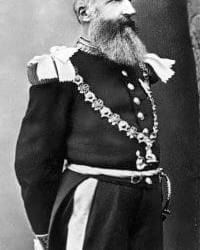
Leopold II in his uniform
False philanthropist
Leopold II is still a controversial figure in Congo today.
The terrifying visions that shock Kurtz are the images of a little-known genocide, the one perpetrated between the late nineteenth and early twentieth centuries by Leopold II of Belgium. A devious and cruel ruler, who passed for being a philanthropist and who instead was the architect of one of the greatest misdeeds in recent history. In 1885 Leopold II managed to take possession of an immense territory (76 times larger than Belgium) covered with forests in the heart of Africa − the drainage basin of the Congo River − thanks to a very clever public relations campaign, in the name of promoting geographical and scientific research, the fight against Arab slave traders, and the spread of civilization and progress.
To achieve his goals, he recruited the most famous explorer of his time, Henry Morton Stanley, who traveled the river and stipulated hundreds of deceptive contracts with local tribal chiefs and laid the foundations for the construction of a system of stations that acted as collectors of the riches of the forest who could reach the ports at the mouth of the river through the river and from there to Europe.
Serve some rubber
Leopold II and the Congo but what were the riches of the forest in those days? There was one, highly coveted by the industry of the time, a resin that was obtained by cutting the bark of the so-called rubber trees and was collected in containers placed at the foot of the trunk. It was rubber, which, thanks to the discovery of the vulcanization process, was destined to become the precursor of plastic. To gain control of this strategic raw material, King Leopold organized a real commercial-military regime consciously based on terror.
Labor was needed to collect the rubber and transport it to the sea, so all Africans were forced to collect that resin without any compensation. Each village had to deliver a certain share of the precious plant product to the emissaries of the philanthropist king: anyone who refused, or delivered smaller quantities than those requested, was harshly punished, to the point of mutilation: a hand or a foot was cut off; to women, the breasts. Assassinations, punitive expeditions, destruction of villages and taking women hostage were used against the rebels.
Inhuman cruelty

Around two thousand white agents were doing the dirty work, spread across the most important points of Leopold's "kingdom": many of them were infamous at home and poorly paid in the Congo. Each agent commanded troops of mercenaries (sixteen thousand in total) and a certain number of armed natives, taken from different ethnic groups and located in individual villages, to ensure that people did their duty. If the quota was lower than the established one, flogging or mutilation was resorted to. It was the method of terror, as effective as it was diabolical.
All this happened in the Congo Free State, as Leopold had called "his" possession. The result was that, according to reliable calculations, around ten million people died over a twenty-year period, directly from amputations or violence, or indirectly from epidemics or starvation. Yes, out of hunger. Because another form of punishment for those who failed to bring in the desired quantities of rubber was the destruction of crops or even villages. And bringing the precious resin in the desired quantities became increasingly difficult, because the suitable plants, given the intensive exploitation, were found further and further from the river and many villages were unable to honor the requests.
Courageous Witnesses
In August 1908, shortly before officially handing over his personal colony to the Belgian government, Leopold II had most of his archives burned for eight consecutive days. “I will give my Congo to the Belgians, but they will not have the right to know what I have done there,” he said. And, in addition to the papers reduced to ashes, he drastically silenced the inconvenient witnesses. Thus it was that an important part of the history of European domination in Africa was erased.
A handful of heroes - journalists, explorers, missionaries or diplomats - who gave birth to the first global movement for the defense of human rights: Edmund Morel, a British reporter and politician who was the first to investigate what was happening in Congo, shouted to the world what was happening in Congo. what happened in Congo; George Washington Williams and William Sheppard, two black Americans, the first a journalist and the second a Christian preacher, who dismantled the figure of King Leopold as a philanthropist; Roger Casement, British consul in Congo, who reported back home what he saw. Without forgetting Alice Seeley Harris and her husband John Harris, two daring missionaries who at the beginning of the twentieth century toured the Congolese forest with the Bible in one hand and the camera in the other. It is thanks to their courage that today we can publish the shocking images of that era. Those precious witnesses denounced Leopold II's reign of terror to the whole world and stopped the carnage of the indigenous peoples
Sources and credits to '' Africa Magazine''
i found all this on internet
All of this is happening again, this time for cobalt.
Free Congo, Palestine and Sudan.
60 notes
·
View notes
Text
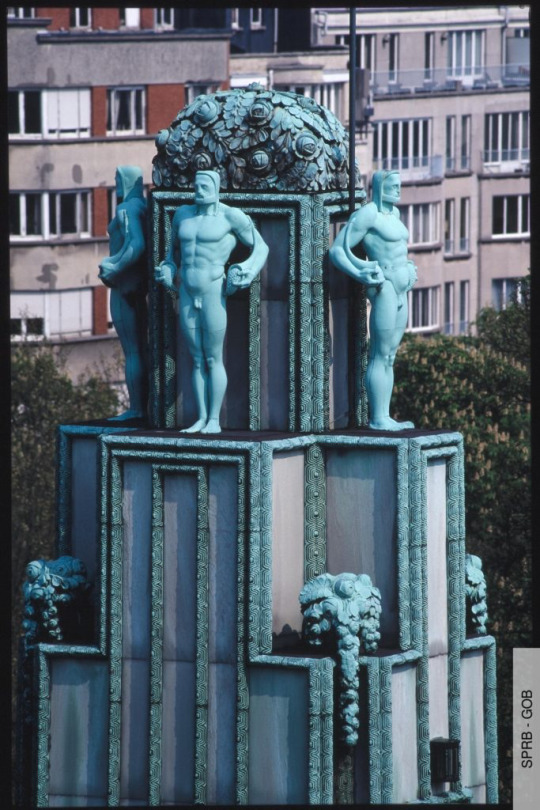

Stoclet Palace, 279–281, Avenue de Tervueren, in the Woluwe-Saint-Pierre municipality of Brussels, Belgium
Mansion designed by the Austrian architect Josef Hoffmann for the Belgian financier Adolphe Stoclet. Built between 1905 and 1911.
Perhaps a transition piece between Art Deco and Art Nouveau.
179 notes
·
View notes
Text


Hôtel Solvay in Brussels, one of the best preserved Art Nouveau properties in the world. Designed by Belgian architect Victor Horta, built between 1894-1903.
📸 left Pascal Smet
📸 right Arau.org
#dark academia#light academia#classical#academia aesthetic#academia#escapism#books and libraries#classic literature#books#architecture#building#historical#interior#art nouveau#Hôtel Solvay#brussels#Victor Horta#royalcore#cottagecore#aesthetic#style#mood#vibe#beautiful#1800s#1900s#19th century#20th century
135 notes
·
View notes
Text

"The Mists of Avalon is a 1983 historical fantasy novel by American writer Marion Zimmer Bradley, in which the author relates the Arthurian legends from the perspective of the female characters. The book follows the trajectory of Morgaine (Morgan le Fay), a priestess fighting to save her Celtic religion in a country where Christianity threatens to destroy the pagan way of life. The epic is focused on the lives of Morgaine, Gwenhwyfar (Guinevere), Viviane, Morgause, Igraine and other women of the Arthurian legend."
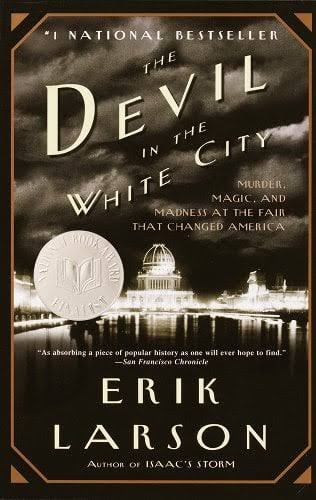
"The Devil in the White City is a 2003 historical non-fiction book by Erik Larson presented in a novelistic style. Set in Chicago during the 1893 World's Columbian Exposition, it tells the story of World’s Fair architect Daniel Burnham and of H. H. Holmes, a criminal figure widely considered the first serial killer in the United States."
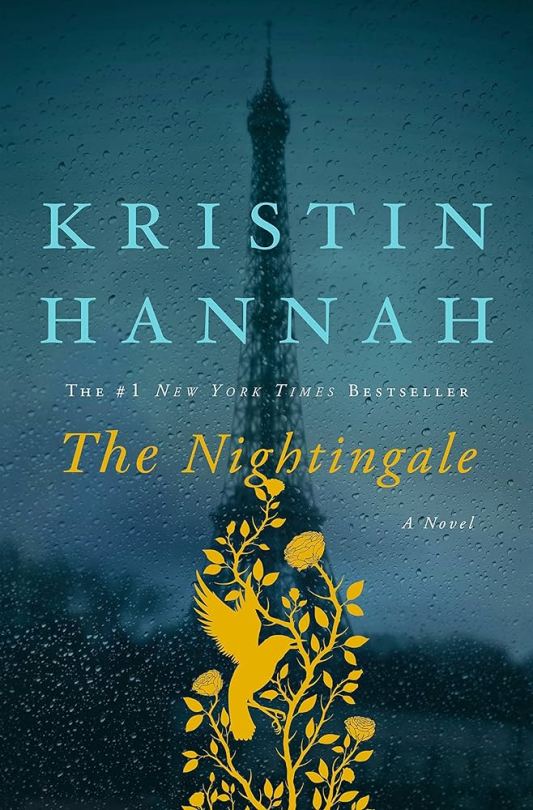
"The Nightingale is a historical fiction novel by American author Kristin Hannah published by St. Martin's Press in 2015. The book tells the story of two sisters in France during World War II and their struggle to survive and resist the German occupation of France. The book was inspired by the story of a Belgian woman, Andrée de Jongh, who helped downed Allied pilots escape Nazi territory."
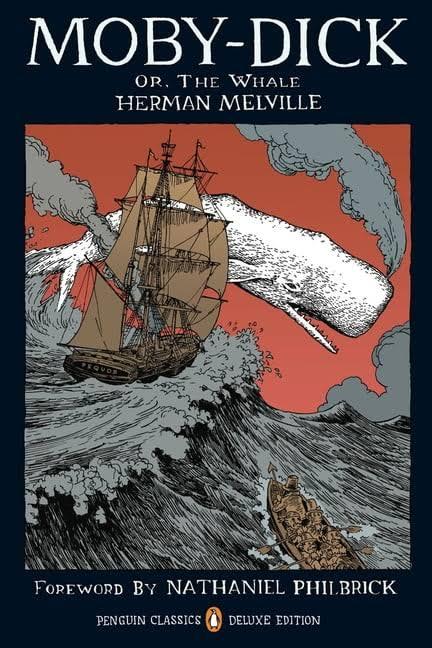
"Moby-Dick; or, The Whale is an 1851 novel by American writer Herman Melville. The book is the sailor Ishmael's narrative of the maniacal quest of Ahab, captain of the whaling ship Pequod, for vengeance against Moby Dick, the giant white sperm whale that bit off his leg on the ship's previous voyage."
16 notes
·
View notes
Text


„A well-known unknown, avoided but unavoidable“ is the title of the first paragraph of Iwan Strauven’s monograph “Victor Bourgeois (1897-1962) - Modernity, Tradition & Neutrality“, published by nai010 publishers in 2021. With this Strauven plays at Bourgeois’ (1897-1962) position and reputation within Belgian modern architecture, a position equally characterized by praise and condemnation: while in the interwar years Bourgeois through his involvement with CIAM and his groundbreaking planning of the „Cité moderne“ in Sint-Agatha-Berchem received a lot of national and international attention, his postwar works work were received with considerable reservation, especially after his untimely death in 1962. Starting out as a radical reformer with early successes like his contribution to the Stuttgart Weissenhof estate in 1927 his later designs were more restrained, neutral so to say, and less avant-garde than those designed before WWII. In his meticulous monograph Strauven for the first time ties together the many strands of research into Bourgeois’ life and work and amalgamates them in a comprehensive and consistent narrative: from his early successes over his long-term teaching at La Cambre in Brussels to his late works up until his untimely death the author challenges passed-on judgements about the architect and shows him as a much more tradition-oriented planner than has long been rumored. Bourgeois was well aware of and sensitive to context and building traditions and adjusted his architecture and quarter plannings accordingly. Especially the Renaissance and the Beaux-Arts tradition were points of departure for his contemplations about town and urban planning.
As convey the various topics touched on above, Strauven‘s book is a rich and highly readable analysis of the complex figure Victor Bourgeois that, by virtue of the fact that it is written in English, will surely stir up renewed international interest in this pivotal figure of Belgian modernism. Highly recommended!
#victor bourgeois#architecture#belgium#architecture book#architectural history#monograph#nai010 publishers#book
33 notes
·
View notes
Text
Sainte-Adresse
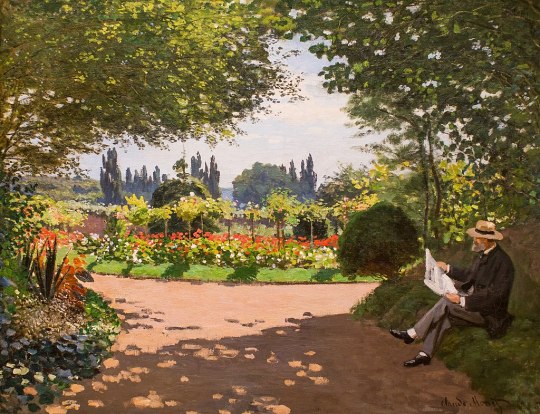
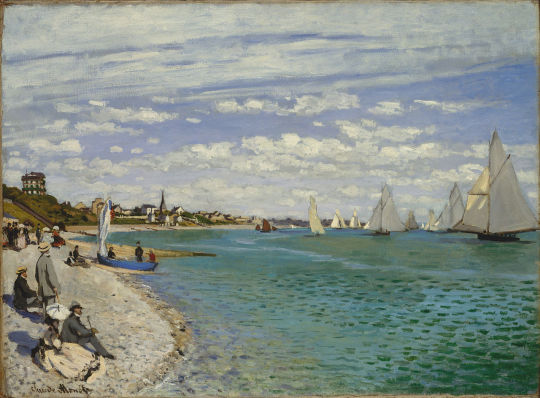

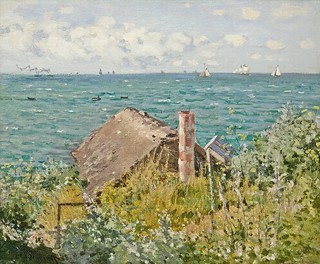

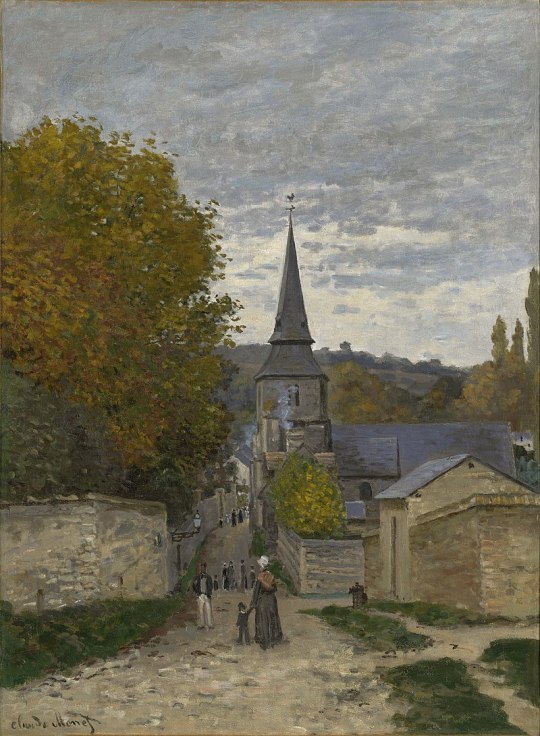
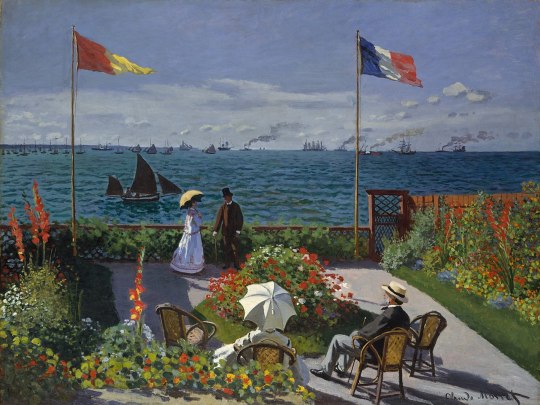
The oldest known name of the commune was "Caput Caleti" mentioned in 1240. Later known as Saint-Denis-Chef-de-Caux, named after an ancient place of worship and its position on the cape. In 1415, Henry V landed with his fleet, to claim the throne of France.
Starting in 1905, Georges Dufayel, a Parisian businessman, created a residential seaside resort known as Nice havrais (the "Nice of Le Havre"), at Sainte Adresse. The local architect Ernest Daniel directed operations. The Avenue de Regatta on the waterfront is designed in the image of the promenade des Anglais in Nice.
During World War I, Sainte-Adresse was the administrative capital of Belgium. The Belgian government in exile was installed from October 1914 to November 1918 in the Dufayel building, named after the businessman who had built it in 1911. It had at its disposal a post office using Belgian postage stamps.
During World War II, the Germans built several fortifications here for the Atlantic Wall, to defend the port of Le Havre.
History of Sainte-Adresse
11 notes
·
View notes
Photo

“This Belgian Architect’s Mid-Century Modern Home Has Very Few Doors and Tons of Cool Sculptures“
-from the Apartment Therapy article of the same name
#vfd#lemony snicket#asoue#atwq#pfb#apartment therapy#very few doors#blog post#i love house tours#they're perfect to satisfy my innate nosiness about what people's homes look like#and also good for decor ideas#very#few#doors#very few
222 notes
·
View notes
Photo

Wenzel Coebergher - Preparations for the martyrdom of St Sebastian - 1599
oil on canvas, height: 288.5 cm (113.5 in); width: 207.5 cm (81.6 in)
Museum of Fine Arts of Nancy, France
Wenceslas Cobergher (1560 – 23 November 1634), sometimes called Wenzel Coebergher, was a Flemish Renaissance architect, engineer, painter, antiquarian, numismatist and economist. Faded somewhat into the background as a painter, he is chiefly remembered today as the man responsible for the draining of the Moëres on the Franco-Belgian border. He is also one of the fathers of the Flemish Baroque style of architecture in the Southern Netherlands.
Born in Antwerp, probably in 1560 (1557, according to one source), he was a natural child of Wenceslas Coeberger and Catharina Raems, which was attested by deed in May 1579. His name is also written as Wenceslaus, Wensel or Wenzel; his surname is sometimes recorded as Coberger, Cobergher, Coebergher, and Koeberger.
Before being known as an engineer, Cobergher began his career as a painter and an architect. In 1573 he started his studies in Antwerp as an apprentice to the painter Marten de Vos. Following the example of his master, Cobergher left for Italy in 1579, trying to fulfil the dream of every artist to study Italian art and culture. On his way there he stayed briefly in Paris, where he learned about his illegitimate birth from seeing the will of his deceased mother. He returned to Antwerp right away to settle some legal matters relating to this discovery. Later in the year, he set forth again to Italy. He settled in Naples in 1580 (as attested by a contract) and remained there till 1597.
In Naples he worked under contract for eight ducats together with the Flemish painter and art dealer Cornelis de Smet. He returned briefly to Antwerp in 1583, buying goods with borrowed money for his second trip to Italy. He is mentioned again in Naples in 1588. In 1591 he allied himself with another compatriot, the painter Jacob Franckaert the Elder (before 1551–1601).
He moved to Rome in 1597 (as attested in a letter to Peter Paul Rubens by Jacques Cools). During that time he had also been preparing a numismatic book in the tradition of Hendrik Goltzius. He must also have built up a reputation as an art connoisseur, since in 1598 he was asked to make an inventory and set a value on the paintings of the deceased cardinal Bonelli.
After the death of his first wife Michaela Cerf on 7 July 1599, he married again, four months later and at the age of forty; his second wife was Suzanna Franckaert, 15-year-old daughter of Jacob Franckaert the Elder, who was also active in Rome. He would have nine children with his second wife, while his first marriage had remained childless.
During his stay in Rome Cobergher became much interested in the study of Roman antiquities, antique architecture and statuary. He was also much interested in the way in which Romans represented their gods in paintings, bronze and marble statues, bas-reliefs and on antique coins. He gathered an important collection of coins and medals from the Roman emperors. These drawings and descriptions were gathered in a set of manuscripts, two of which survive (Brussels, Royal Library of Belgium). He was also preparing an anthology of the Roman Antiquity (according to the French humanist Nicolas-Claude Fabri de Peiresc) that was never published. Sometimes the "Tractatus de pictura antiqua" (published in Mantua, 1591) has been ascribed to Cobergher, but this was based on an erroneous reading of an 18th-century catalogue.
At the same time he was witness to the completion of the dome of St. Peter's Basilica in 1590. The architecture of several Roman churches made also a deep impression on him; among them most influential were the first truly baroque façade of the Church of the Gesù, Santa Maria in Transpontina and Santa Maria in Vallicella. He would use their design in his later constructions.
During his stay in Italy he painted, under the name "maestro Vincenzo", a number of altarpieces and other works for important churches in Naples and Rome. His style is somewhat mixed, incorporating Classical and Mannerist elements. His composition is rational and his rendering of the human anatomy is correct. A few of his altarpieces still survive: a Resurrection (San Domenico Maggiore, Naples), a Crucifixion (Santa Maria di Piedigrotta, Naples), a Birth of Christ (S Sebastiana) and a Holy Spirit (Santa Maria in Vallicella, Rome). One of his best known paintings is the Martyrdom of Saint Sebastian, originally in the Cathedral of Our Lady (Antwerp), but now in the Musée des Beaux-Arts in Nancy. This painting was commissioned by the De Jonge Handboog (archers guild) of Antwerp in 1598, while Cobergher was still in Rome. His Angels Supporting the Dead Lord, originally in the Sint-Antoniuskerk in Antwerp, can now also be found in the Musée des Beaux-Arts in Nancy, while his Ecce Homo is now in the museum of Toulouse.
Cobergher died in Brussels on 23 November 1634, leaving his family in deep financial trouble. His properties in Les Moëres had to be sold, as well as his house in Brussels. Even his extensive art and coin collection was auctioned off for 10,000 guilders.
59 notes
·
View notes
Text



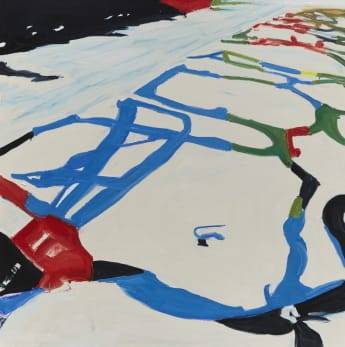



Koen van den Broek (b 1973, Belgium) currently lives and works in Antwerp in Belgium. He received a BA in Architect in KU Leuven and studied painting in St. Joost School of Art & Design, Breda and in Royal Academy of Fine Arts in Belgium.
He studied architecture before completing MAs in Painting at several universities, exploring figurations of urban constructions such as signposts, car parks, grid-pattern pedestrian passages, bridges and borderlines of roads easily discovered in cities and their peripheries.
‘The sheer strength of observation’ he has developed as an artist enables him to concentrate on hidden elements and colours of the sites and objects instead of simply regarding them as a framework supporting the city.
7 notes
·
View notes
Text
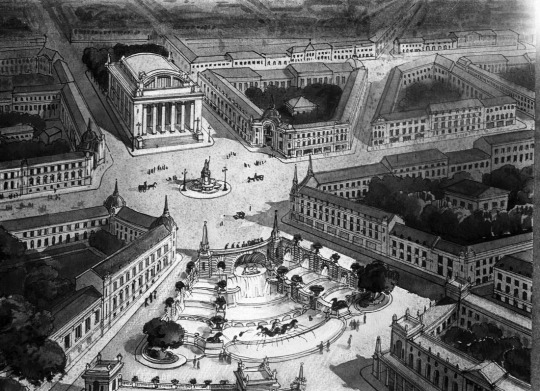
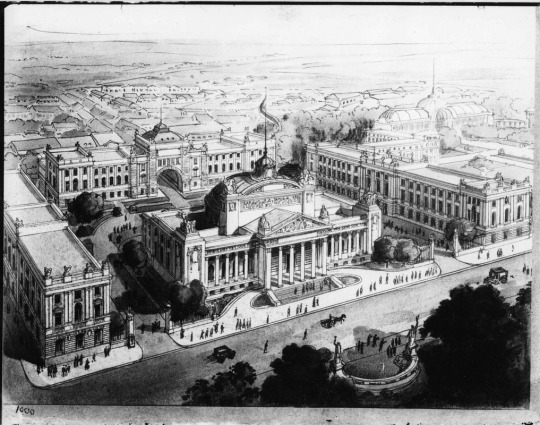


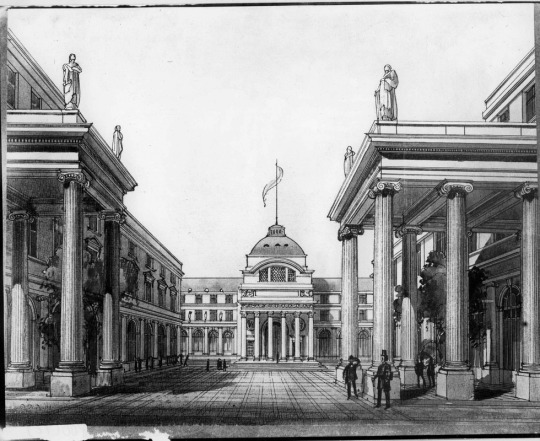

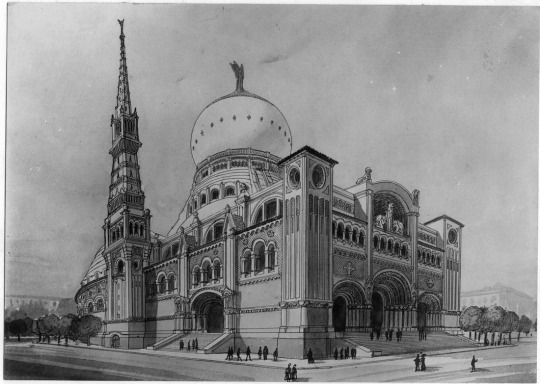



Plans of Belgian architect Alban Chambon for Serbia's capital city of Belgrade. Unfortunately never finished due to First Balkan war kicking off, soon followed by Second Balkan war and later with WWI.
55 notes
·
View notes
Text


Plans [a short story]
⇢ P’s past and what a potential future could look like with the MC.
Happy birthday to my favourite witch/warlock.
I think P started off as being very underrated and as the story progressed and I wrote more about them in drabbles etc., they’re probably much more of a fan favourite.
They’re intelligent, emotional, kind, suave, and everything you’d want in a friend… and a lover, especially if you plan to/are romancing them.
Hope you enjoy this short story for their birthday, do tell me what you think — [and pat me on the back for writing 1.5k words of this in a few hours yesterday].
Whilst there are some that are afraid of it, P has always found the future intriguing. Whether it comes from the magic flowing within them, or the urge to know what happens next in their lifetime, the future has always been a personal interest. Right from the start. If it wasn’t, they wouldn’t have left their small town, travelled, and made a large city their new home.
They initially had a plan, but that changed drastically, more than they could’ve ever imagined. The aim was to study, be, I don’t know, a teacher, or an architect maybe because they know their way around sketches and a paintbrush — but the supernatural world had other ideas. Not that P’s bothered by that. If it didn’t, they wouldn’t have met the other three people that would play such a huge part in their life, become their best friends, and mutually, their pain in the ass at the best of times.
And, technically, if their academic and planned out route had worked, it’s the possibility that they wouldn’t have met you.
So, small victories. Or very large ones, actually.
The witch/warlock bundles into your home, phone clutched between their ear and shoulder as they carry the rest of the bags in. You can hear their footsteps, the rustling of the bags, and then their soft, melodic voice comes next. They’re not talking in English, that’s easy enough to tell, so it’s obvious who they’re talking to. The language changes from Dutch to French with ease before they’re silent for a moment.
“Okay, I’ll think it over,” P murmurs before saying goodbye and ending the call.
You jump up and slip onto the kitchen counter to take a seat. “I can’t tell whether that was a stressful conversation or not,” you say, watching as P flashes you a smile and drops their phone and bags on the table.
“Hello to you too,” they greet cheerily. “I was talking to my dad.”
“I figured.” You raise an arm and use your hand to beckon P. Family has always been a topic that you feel you have to tread carefully on when you talk to P, they had a complex childhood to say the least, which isn’t all that common for magical beings from Europe. But it always feels like you’re peeling back a layer from the guards that P doesn’t realise they have up when they mention their family.
They’re Dutch and Belgian. An only child, something the others joke about and say that it’s why they’re terrible when it comes to sharing. Originally brunette, that came from their dad and his side of the family, their mum's the blonde one — which P clearly envies even though you’ve encouraged them to stop dying their hair for a little while. They’re considering it, they truly are, especially if it puts a smile on your face. Also grew up with a pet dog that they adored, much to their parents’ dismay because a magical child and an animal has its tendencies to cause chaos.
“Is he hoping that you’ll meet him in the Netherlands next month?” you ask P. They nod. “What’s stopping you?”
P’s gaze is downwards, their head tilts a little as they move to stand in between your legs and rest their hands on your thighs. “Nothing really.”
“Yet you’re not snapping up the opportunity. Why?”
They shrug before smiling. “Believe or not, I like it here.”
You snort. “Don’t let the big city rub off on you.” You gently tap your fingertips over their knuckles. “You think your dad’s going to try and make you stay if you go over to the Netherlands for a few days.”
It’s easy to pick up on P’s conversations sometimes. The tone of their voice, their facial expression when something isn’t going right.
“Not think, I know,” P sighs.
“Understandable,” you murmur, a statement that P arches a brow. “He’s pissed you fell in love with someone human.”
“That’s not true.”
“Hm, it totally is,” you say back. “Not that I mind, tell him I think his kid is a catch,” you say playfully with a wink, enough for a chuckle to fall from P’s mouth. They bring your hand up to their mouth and place a kiss on it — that’s something you’re used to as well.
“I’m sure he’ll be happy to hear that,” they mumble before their expression turns serious. “If I go on this trip, will you come?”
Your eyebrow arches. “Me, a human, come and meet a bunch of magical beings in a small town?”
“You handle my magic just fine.” You do, that’s clear. Even now, with a wave of P’s hand the bags on the table float into the kitchen and the contents begin arranging themselves in the correct drawers and cupboards.
“Yeah, but that’s different. You’re different.”
“Oh?”
“I’m used to it all. I live with you. I love you.”
Their eyes sparkle at your last three words. That’s an expression you’ve taken notice of more than once. The three words always seem to calm P in a stressful situation, just having affection returned has the ability to do that to them. You remember months ago when the two of you were lying on the sofa, your head in their lap as their fingers delicately ran up and down your arm, tracing aimless patterns as they murmured all the ways they fell in love with you.
You were both unbelievably tired, jobs in the supernatural world tend to do that to the body. P’s eyes were closed, they were speaking softly, letting the words roll off their tongue before you both fell asleep right there.
You remember what they said with ease.
“I’m used to falling for someone really fast, and before it ended up not working out. I changed my approach after that, tried falling gradually instead of all at once… I’m not sure it worked when I started liking you though. It just… happened. I couldn’t stop it, didn’t want it to, admittedly. It’s the best I’ve felt and even though we’re together, live together and everything, I still feel like that.”
You fell asleep with a smile on your face that day, woke up with a smile too and P had asked why you were so cheerful, almost forgetting that they had spilled their heart out to you at 2am.
You’re brought back to the present when you rest your hands on P’s cheeks. “If your dad tries forcing you to stay and live in the Netherlands, I’ll fall out with him big time — I’m not joking.”
P chuckles. “I don’t think you are. Does that mean you’re coming if I go?”
“I’ll think it over,” you tease before pushing their shoulders back so you can slip off the counter. “I’m on the night shift today.”
P groans as you walk past them to go to your bedroom, they follow behind. “Did you ever actually think you’d get a job in the supernatural world?”
You snort. “Of course not,” you chuckle as you take a jacket off the hanger and slip it on. “No regrets though… well, only when I need to work stupid hours but it’s worth it. Most of the time.”
“Do you want me to wait up for you?” P asks. Dumb question. Whether you say yes or no, you know they will. You smile at them.
“I’m sure I’ll come in and see you on the sofa.”
“You’re not wrong,” P says with a casual nod as they hand you your backpack. “Be careful.”
“I always am.” You grin at their protectiveness.
“And call if you need anything.”
“I always will.”
P tugs you into them, the two of you sway a little, their forehead pressed against yours. “Will you stop off at that café down the road in the morning and get those pastries we like?” they mumble against your lips.
You roll your eyes as you take a step back. “I’m going.”
P lets out a hearty laugh as you leave your bedroom and move towards the front door. “Have a good night.”
“Uh-huh, you too,” you say back playfully, keys in the front door and you hear their voice again as you’re about to twist the handle.
“Check the front pocket of your bag, by the way.” You turn behind you, an eyebrow arched as you expect to see P still standing there, but they’re not. You do as they instructed, rummage through the front pocket and pull out a piece of paper. You stare down at it and chuckle.
Another sketch to add to the collection P randomly likes to draw for you.
Only this isn’t a drawing that’s from today. It’s the memory you recalled earlier, the two of you asleep on the sofa after P poured their heart out to you; and below it is their neat handwriting.
‘I love you — don’t forget the pastries’.
223 notes
·
View notes
Photo
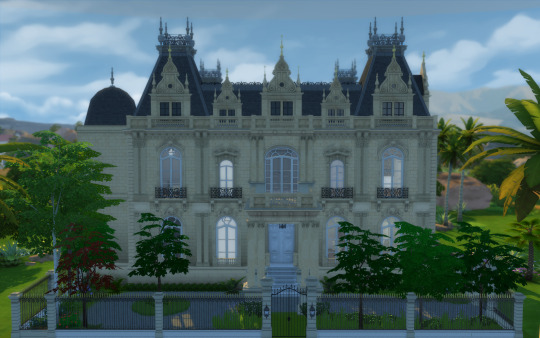
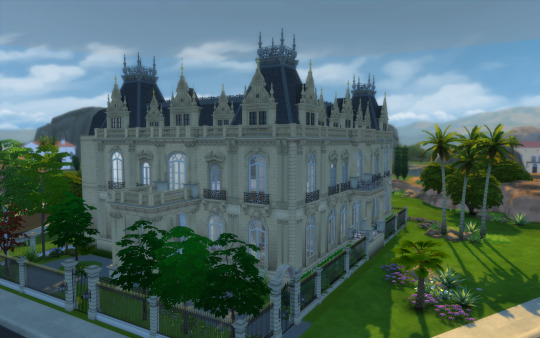


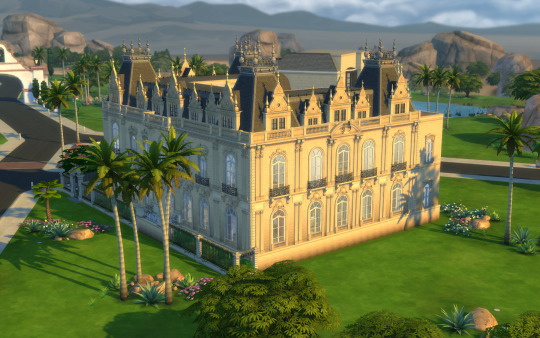

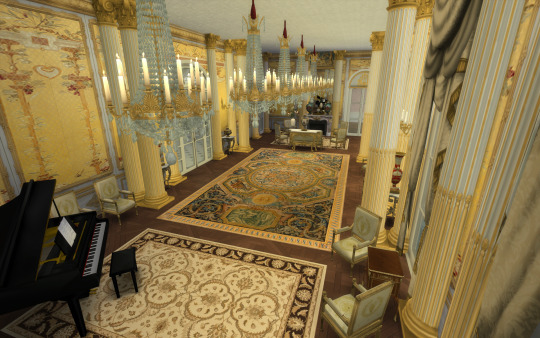

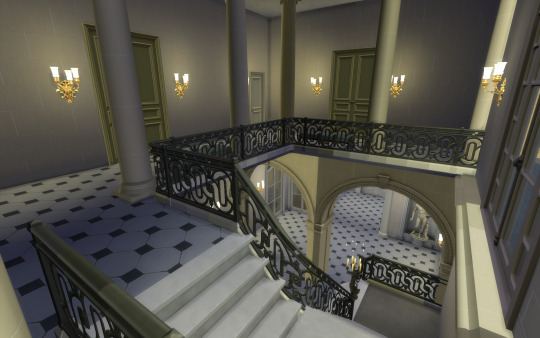

Ortiz Basualdo Anchorena Palace
Hi Guys! I leave this residence here. Could not find the floorplan, so I took some building liberties.
As always, you will need lots of CC for it to work properly, mostly from Felixandre, TheJim, SYB, Aggresivve Kitty, among others.
Thanks to my patreons for all the support! I really appreciate your participation and gives me a boost of confidence!
Please let me know if you like it :)
Enjoy!
DOWNLOAD: https://www.patreon.com/posts/81865201
--------------------------------------------------------------------------------------
A little bit of context and history:
The disappeared Ortiz Basualdo Anchorena Palace (better known as the Ortiz Basualdo Palace) was a luxurious residence that existed facing the San Martin Plaza in the neighborhood of Retiro, Buenos Aires.
This grand mansion, which occupied half a block bounded by Basavilbaso, Maipú, and Arenales streets, was designed by Belgian architect Jules Dormal at the request of Mrs. Magdalena Dorrego de Ortiz Basualdo (1826-1905) for her eldest daughter, Inés Ortiz Basualdo (1853-1922), widow of Estanislao Peña y Lezica, and her youngest son, Carlos Ortiz Basualdo (1863-1910) married to Matilde de Anchorena Castellanos, all members of important aristocratic families of late 19th century Argentina.
The mansion was completed in 1904, and that year, the Municipality of Buenos Aires awarded it the First Prize for Best Façade in its annual competition. This palace should not be confused with the one built in 1912 for Daniel Ortiz Basualdo (1860-1935), the second son of Mrs. Dorrego de Ortiz Basualdo, married to Mercedes Zapiola, at the corner of Cerrito and Avenida Alvear, now the Embassy of France.
The Ortiz Basualdo Palace, which appeared as a single unit, actually contained two important adjacent but independent residences. One with an entrance at Arenales 733, with a grand porte cochère, was that of Inés Ortiz Basualdo de Peña, who, already a widow, moved into it with her daughter Elisa Peña de Uribelarrea (1878-1943), newly married to Manuel Adrián de Uribelarrea Anchorena, a marriage that had ten children. In 1943, Elisa Peña de Uribelarrea died, already a widow, and the executor of the estate entered into negotiations to sell her part of the palace to the Russian embassy, which finally bought the house of Celedonio Pereda on Rodriguez Peña street.
The other great residence with an entrance at Maipú 1210 was that of Carlos Ortiz Basualdo, married to Matilde de Anchorena Castellanos in 1896. Carlos Ortiz Basualdo died in 1910, after having five children, four boys and one girl. Matilde de Anchorena Castellanos married François Verstraeten Dunois in 1914, with whom she had a son and a daughter. Her son, Francisco Verstraeten de Anchorena, married Raquel Terán Etchecopar in 1942, and her daughter, Elena Verstraeten de Anchorena, married Enrique Ibarguren in 1941. The Verstraeten Anchorena family lived in the palace until their last days. After the death of Doña Matilde de Anchorena Castellanos de Verstraeten in 1969, the remaining part of the palace was auctioned and demolished.
The Ortiz Basualdo Palace was one of the most important examples of the palaces and mansions that emerged in the early 20th century in the neighborhoods of Retiro, Recoleta, and Palermo. These mansions were clustered around the San Martin Plaza, along Avenida Alvear and adjacent streets. Until the crisis of 1930, family successions and the emergence of rationalism in architecture definitively put an end to them, both in aesthetic exhaustion and economic reality.
Credit:
Argentina de Antaño
#sims 4 screenshots#sims 4 architecture#sims4palace#the sims cc#sims 4 build#sims4#sims4living#sims4play#sims4royalty#sims4frencharchitecture#sims 4 building#french architecture#argentina_lost_history#palaciossims4#sims4palacios#sims4mansions
24 notes
·
View notes
Text

HUE/AM/I – HUE/I/AM is a minimalist furniture collection by the Brooklyn-based interior architect and designer, Kim Mupangilaï. As the Antwerp-born designer’s debut furniture collection, HUE/AM/I – HUE/I/AM is an exploration and rediscovery of Mupangilaï’s Belgian and Congolese cross-cultural identity.
5 notes
·
View notes